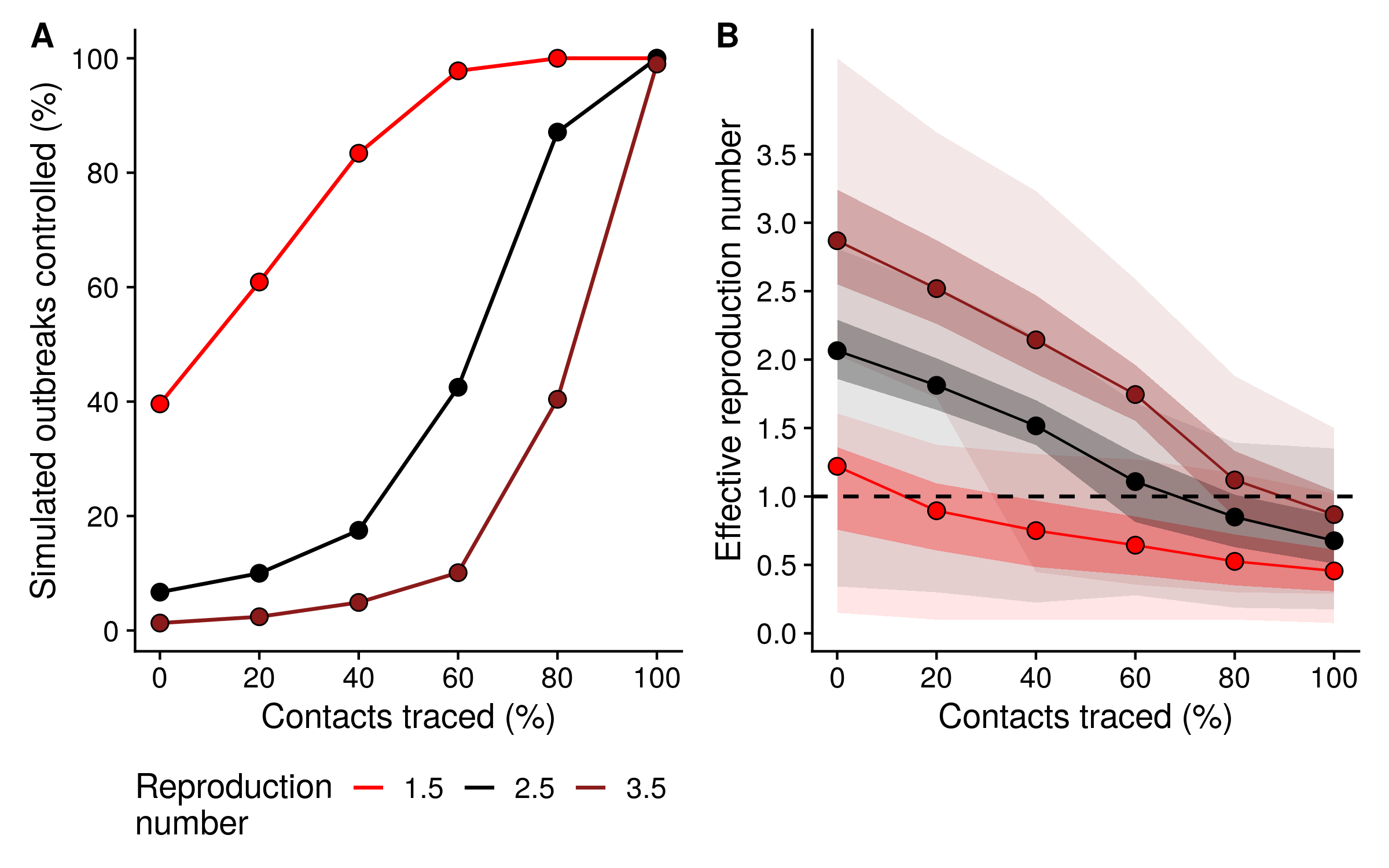Feasibility of controlling 2019-nCoV outbreaks by isolation of cases and contacts
Feasibility of controlling 2019-nCoV outbreaks by isolation of cases and contacts
Note: this is preliminary analysis and has not yet been peer-reviewed.
Last updated: 7 February 2020
Authors: Joel Hellewell (1), Sam Abbott* (1), Amy Gimma* (1), Nikos I Bosse (1), Christopher I Jarvis (1), Timothy W Russell (1), James D Munday (1), Adam J Kucharski (1), W John Edmunds (1), CMMID nCoV working group, Sebastian Funk** (1), Rosalind M Eggo** (1)
* these authors contributed equally
** these authors contributed equally
- Centre for Mathematical Modelling of Infectious Diseases, Department of Infectious Disease Epidemiology, London School of Hygiene & Tropical Medicine, Keppel Street, London. WC1E 7HT.
Correspondence to: r.eggo@lshtm.ac.uk
Aim
To assess the viability of isolation and contact tracing to control transmission from imported cases of 2019-nCoV.
Summary of Methods
We modelled outbreak scenarios with:
- reproduction numbers of 1.5, 2.5, and 3.5
- short and long onset-to-isolation delay of new cases (3.8 days, 9.1 days)
- 0%, 15%, 30% of transmission before symptom onset
- 0 or 10% subclinical (asymptomatic) infection
In the model, initial cases are isolated following the delay to isolation, and their contacts are isolated immediately upon developing symptoms. An outbreak is defined as controlled if there are no cases after 3 months.
Summary of findings
- The percentage of contacts traced is critical to achieving control in all scenarios (Figure).
- Higher transmission (higher R0) makes outbreaks more difficult to control.
- 30% transmission before symptoms makes control less likely in all scenarios.
- 60-80% of contacts must be traced (and transmission stopped) in order to achieve control in most scenarios, and more for some characteristics.
- Presence of subclinical (asymptomatic) cases has an outsize and negative impact on probability to achieve control.
Key Assumptions and Limitations
- Heterogeneity in individual-level number of secondary cases is the same as SARS.
- Traced contacts are isolated immediately on symptom onset (and not before).
- Isolation prevents all transmission.
- No other interventions (R0 stays constant).

Figure: A) The percentage of outbreaks that are controlled for scenarios with varying reproduction number (R0), at each value of contacts traced. The baseline scenario is R0 of 2.5, 20 initial cases, a short delay to isolation, 15% of transmission before symptom onset, and 0% subclinical infection (black line). A simulated outbreak is defined as controlled if there are no cases between weeks 12 and 16 after the initial cases. See supplement for other scenarios. B) Effective reproduction number in the presence of case isolation and contact tracing. Median (line), and 50% and 95% intervals (shaded regions) are shown.
This study has been published in Lancet Global Health.